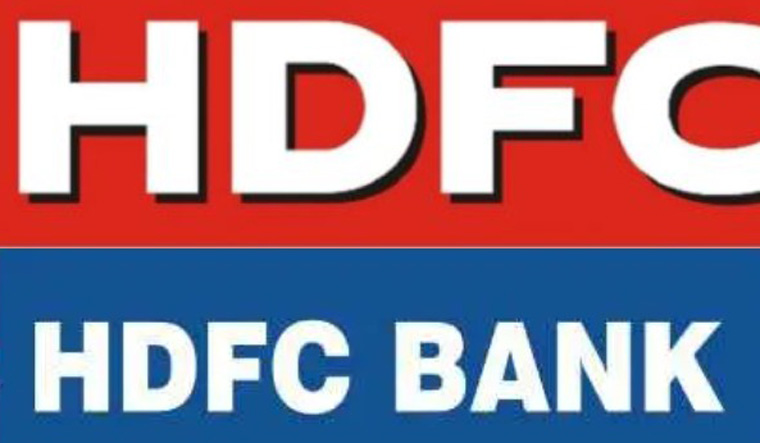In a deal akin to a son growing up and taking over the father’s business, India’s largest mortgage lender HDFC is to merge with HDFC Bank, the country’s largest private sector lender. The deal, if approved, will create a financial sector behemoth and catapult the merged entity into the top three in the country in terms of market capitalisation.
“After 45 years in housing finance, providing 9 million homes to Indians, we have to find a home for ourselves and we have found a home in our own family company - HDFC Bank,” said HDFC chairman Deepak Parekh.
As a part of the deal, HDFC shareholders will get 42 shares of HDFC Bank for 25 shares held in HDFC. Post the merger, HDFC Bank will be fully owned by public shareholders and existing shareholders of HDFC will own 41 per cent of HDFC Bank.
There are several advantages and synergies for both the entities in merging the respective businesses. For one, HDFC Bank will be able to strengthen and diversify its lending business with HDFC”s mortgage loan portfolio, a segment which is at the cusp of a strong up-cycle. On the other hand, the mortgage business could leverage HDFC Bank’s network of more than 6,300 branches and grow significantly. There will be multiple cross-selling opportunities, too.
“The merger makes the combined entity strong enough not only to counter competition, but make the mortgage offering even more compelling. The merger will capitalise on our domain knowledge in real estate and mortgages, as well as operational efficiencies in processing mortgages, while leveraging the cost of funds efficiency and the wide distribution network of the bank,” said Parekh.
Home loan customers will also now have access to a range of financial products under one roof and it will be able to offer all the variations in mortgage products, which currently HDFC as a standalone entity is unable to offer, he added.
Currently, only 11 per cent of HDFC Bank’s assets are in mortgage loans, compared with 30-40 per cent for other large banks. A large portion of HDFC Bank’s customers had home loans from other banks, pointed Sashidhar Jagdishan, the CEO and MD of HDFC Bank. The merger with HDFC will help the bank deepen home loan penetration within in its customer base. On the other hand, noted Parekh, only 30 per cent of HDFC customers had accounts with HDFC Bank. These customers could now be pursuaded to open HDFC Bank accounts and avail other services offered by the lender.
“We now have the opportunity to take the mortgage penetration high. They (HDFC) also has a customer base, where the promotion of our products is low. So, we have a complete suit of ex-mortgage products to cross-sell them,” said Jagdishan.
In the merged entity, mortgages will comprise 33 per cent of the loans, retail loans will be 21 per cent, commercial and rural banking will be 24 per cent and corporate loans book will be 19 per cent, according to their presentation.
On an proforma basis, the merged entity will have annualised profit after tax of Rs 49,263 crore, networth of Rs 3.30 lakh crore and advances of over Rs 17.87 lakh crore.
Investors gave a big thumbs up to the deal on Monday, while HDFC Bank shares surged 10 per cent to Rs 1,656.45, HDFC ended up 9.3 per cent to Rs 2,678.90.
The combined entity will be able to extract substantial synergy benefits, which abode well for all stakeholders and shareholders, said Samir Bahl, CEO, investment banking at Anand Rathi Advisors.
“With this merger, HDFC bank gets an unparalleled advantage through the mortgage portfolio providing it a quantum leap in distribution to semi urban and rural areas with a huge opportunity to cross sell bank products to a very sticky client base,” he said.
The mortgage business will gain from the low-cost funds available to the bank, while the bank stands to benefit from HDFC’s competence in mortgage lending, said V.K. Vijayakumar, chief investment strategist at Geojit Financial Services.
However, the deal could also be a drag for HDFC Bank due to priority sector lending requirements and higher SLR (statutory liquidity ratio) and CRR (cash reserve ratio) requirements, felt Macquarie analysts Suresh Ganapathy and Param Subramanian.
“Refinancing HDFC’s funding with low-cost deposits will be key for success of the merger,” the analysts said.
The merger is subject to various regulatory and shareholder approvals. Approval by the Reserve Bank of India will be particularly a key monitorable. Post merger, HDFC Bank will end up holding 48 per cent in HDFC Life Insurance, 50 per cent in HDFC Ergo General Insurance Company and 69 per cent in HDFC Asset Management, according to the Macquarie analysts.
As per norms, banks can either have more than 50 per cent stake in a life insurance company or below 30 per cent. HDFC Bank has written to the regulator seeking permission to keep the stake as it is. HDFC Bank can also easily buy the extra stake that will take its shareholdering to over 50 per cent, said Parekh.
Other than RBI, the deal will also need approval from stock exchanges, Securities and Exchange Board of India, insurance regulator IRDAI, Competition Commission of India and National Company Law Tribunal.
HDFC Officials expect the merger process to complete by the second quarter or third quarter of the financial year ending March 2024.





